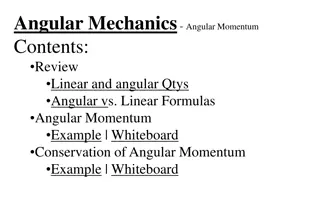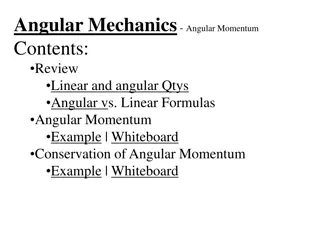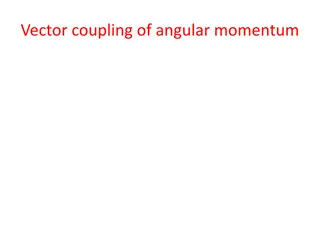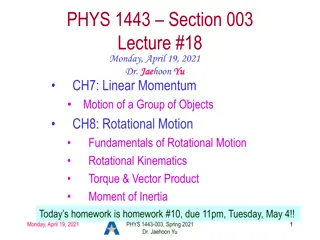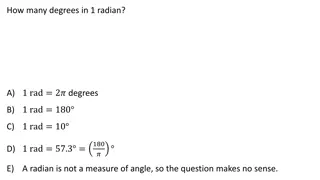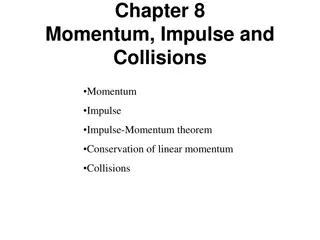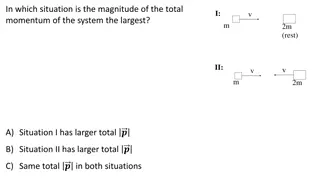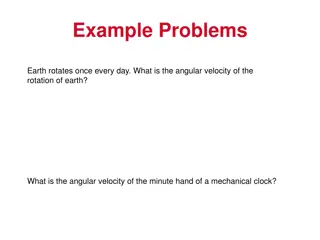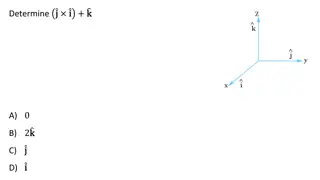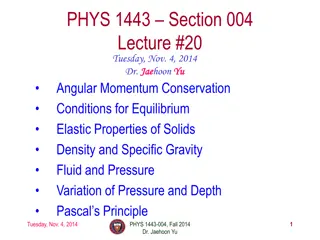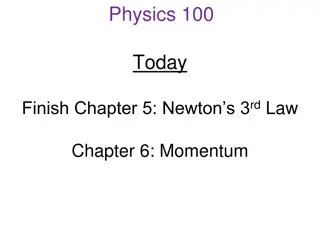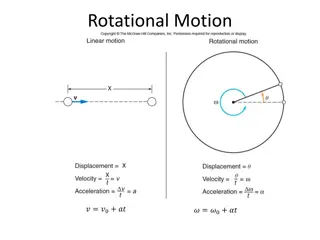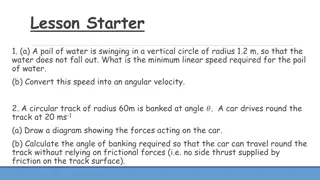
Angular Momentum in Physics
Explore the concept of angular momentum in physics, including the calculation of speed for a uniform disk rolling down a hill, moment of inertia, kinetic energy, and angular velocity. Understand the relationship between moment of inertia and rotational motion, and discover how angular momentum is introduced and defined mathematically using cross products.
Download Presentation

Please find below an Image/Link to download the presentation.
The content on the website is provided AS IS for your information and personal use only. It may not be sold, licensed, or shared on other websites without obtaining consent from the author. If you encounter any issues during the download, it is possible that the publisher has removed the file from their server.
You are allowed to download the files provided on this website for personal or commercial use, subject to the condition that they are used lawfully. All files are the property of their respective owners.
The content on the website is provided AS IS for your information and personal use only. It may not be sold, licensed, or shared on other websites without obtaining consent from the author.
E N D
Presentation Transcript
Bell work What will be the speed of a uniform disk that rolls without slipping down a hill with a height h?
Review of moment of inertia Recall that, kinetic energy for a point mass is Since the speed of an object as the result of rotation is given by A point mass that is a distance from the axis will have more kinetic energy than one closer, specifically
Review of moment of inertia Consider an object with radius R and total mass M. To get KE we add the energies of all the point masses together to get the total energy But not every point on most objects is at the very edge of the object, so we need to add up the contributions of every point to get the total energy. Each point is some fraction of the radius R, so we end up with something less than Typically done through integration, but for some simple configurations we can actually compute the sum.
Take away Note that behaved like mass for the rotational case (it controlled how much energy we had at a given angular velocity) It makes sense that objects with larger I would be harder to start spinning and harder to stop spinning.
Angular velocity We dealt only with the angular speed so far Energy is a scalar Angular velocity for an object moving around a circle can be given by Note that if everything is nicely perpendicular, this just gives back Note that the direction of the angular velocity is perpendicular to the plane of motion
Introducing angular momentum In math anything can be defined (but it might not be useful) Look for something like momentum, but with rotation First guess Dropping directions for a second, and taking a point mass We can write this as
Introducing angular momentum Recognize that So we can write But what sort of product should we take? Both of these are vectors Try cross product Now check if it makes sense

